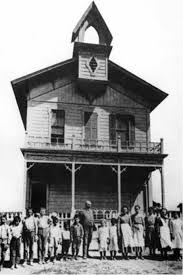
Arriving in San Francisco in July 1850 after a six month sea journey from Massachusetts, twenty-five year old auctioneer Henry Mayo Newhall made a beeline for the Sierra Nevada foothills in California. He was a little late. All the promising gold mining sites had already been claimed. Dejected, he returned to San Francisco to begin his long trek home. While waiting for his vessel, he observed how arriving ships would unload their cargoes and sell valuable goods immediately on the docks. Seizing the opportunity, Newhall opened his trunk right there. In a flash, he auctioned off most of his belongings, including the ship ticket home. Soon, he established a flourishing auction house as well as an import/export business in San Francisco.
With a keen entrepreneurial eye, Newhall used money from the sale of his import/export business to plunge into fledging railroad enterprises that sought to connect San Francisco to other new cities in the West. By the time he was forty, Newhall was the President of the San Francisco San Jose Railroad Company. In 1865, the company’s “California,” the first heavy locomotive in the state, made its maiden voyage to what is now called Palo Alto. Eventually, he sold his railroad interests to the new Southern Pacific Line where he stayed on and served as Director. Turning his interest to real estate, between 1871 and 1875, Newhall purchased 143,000 acres in California, stretching from Monterey County in Central California to Ventura County in the South.


He had a master plan: deed the right of way to the Southern Pacific for new tracks and “whistle” stops, thus insuring that residents and businesses would populate the area, making his real estate much more valuable. The initial line connecting the San Francisco Bay area with Los Angeles was laid across his land. He named one whistle stop Saugus after his birthplace in Massachusetts. Soon, Southern Pacific designed a town nearby and called it Newhall. Today, they are thriving communities with populations of about 50,000 each.

 First school house in the town of Newhall, 1882
First school house in the town of Newhall, 1882
Henry Newhall’s next adventure was to establish ranching and farming empires on his land, producing a wide variety of crops from corn and alfalfa to sugar cane and citrus fruits, as well as his staple – wheat.


When Newhall died in a horse riding accident in 1882, his family, which included his widow and five sons, wisely avoided the usual family squabbles that invariably seemed to accompany the division of a large estate. Instead of splitting their inheritance, the family joined forces to incorporate as the Newhall Land and Farming Company, also known as Newhall Ranch. It prospered and soon included vineyards in Central California. Oil was discovered on part of the property. In 1965, the family sold a right of way to the State of California for the major Highway 5, and then hired urban designers to develop a part of the land in Los Angeles County as a planned community. Thus, Valencia was born. The town of 65,000 is best known for its oranges and the location of Six Flags Magic Mountain amusement park.

Henry Newhall’s rags-to-riches story is typical of many of the wealthiest California business pioneers resting at Cypress Lawn. They started with very little but in a course of a lifetime built great empires, and in the end, great mausoleums and memorials. It is the American Dream writ large.
